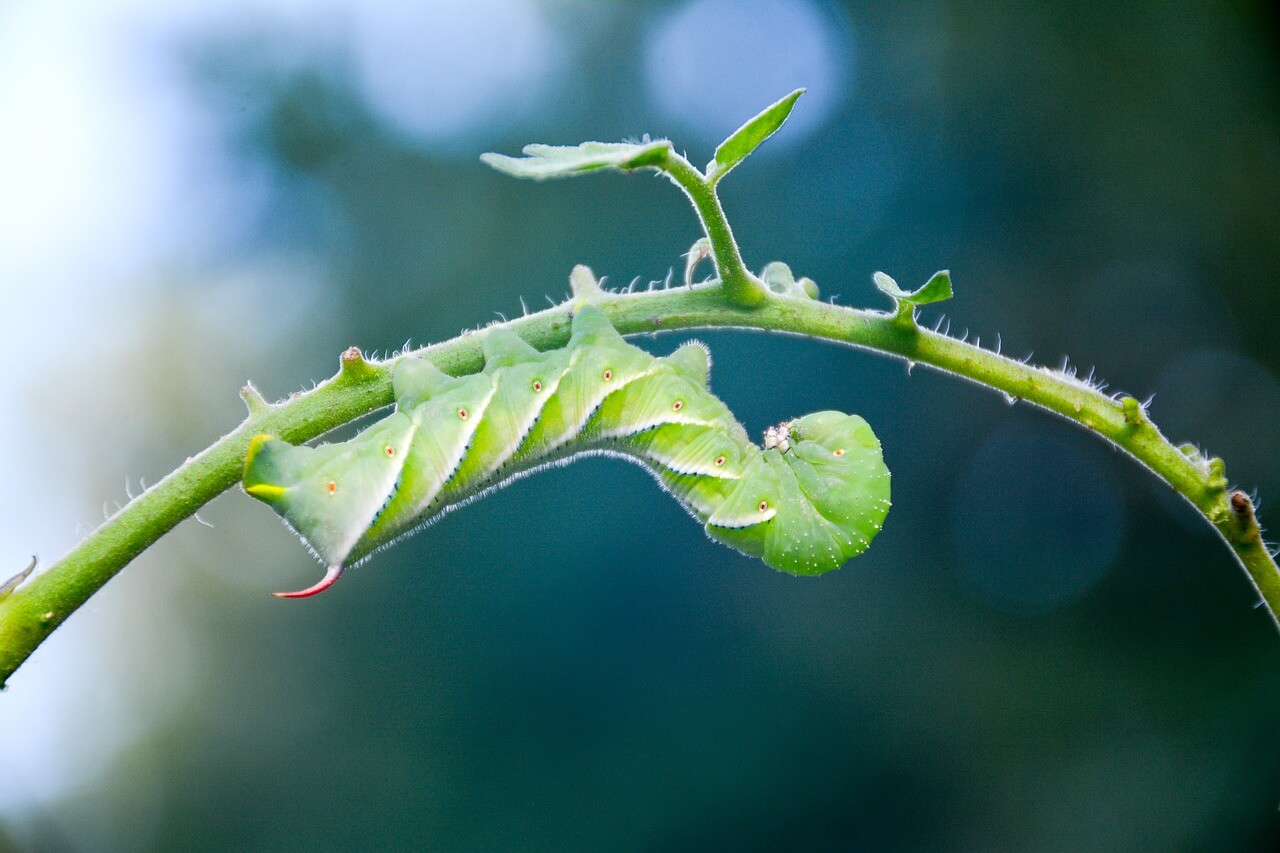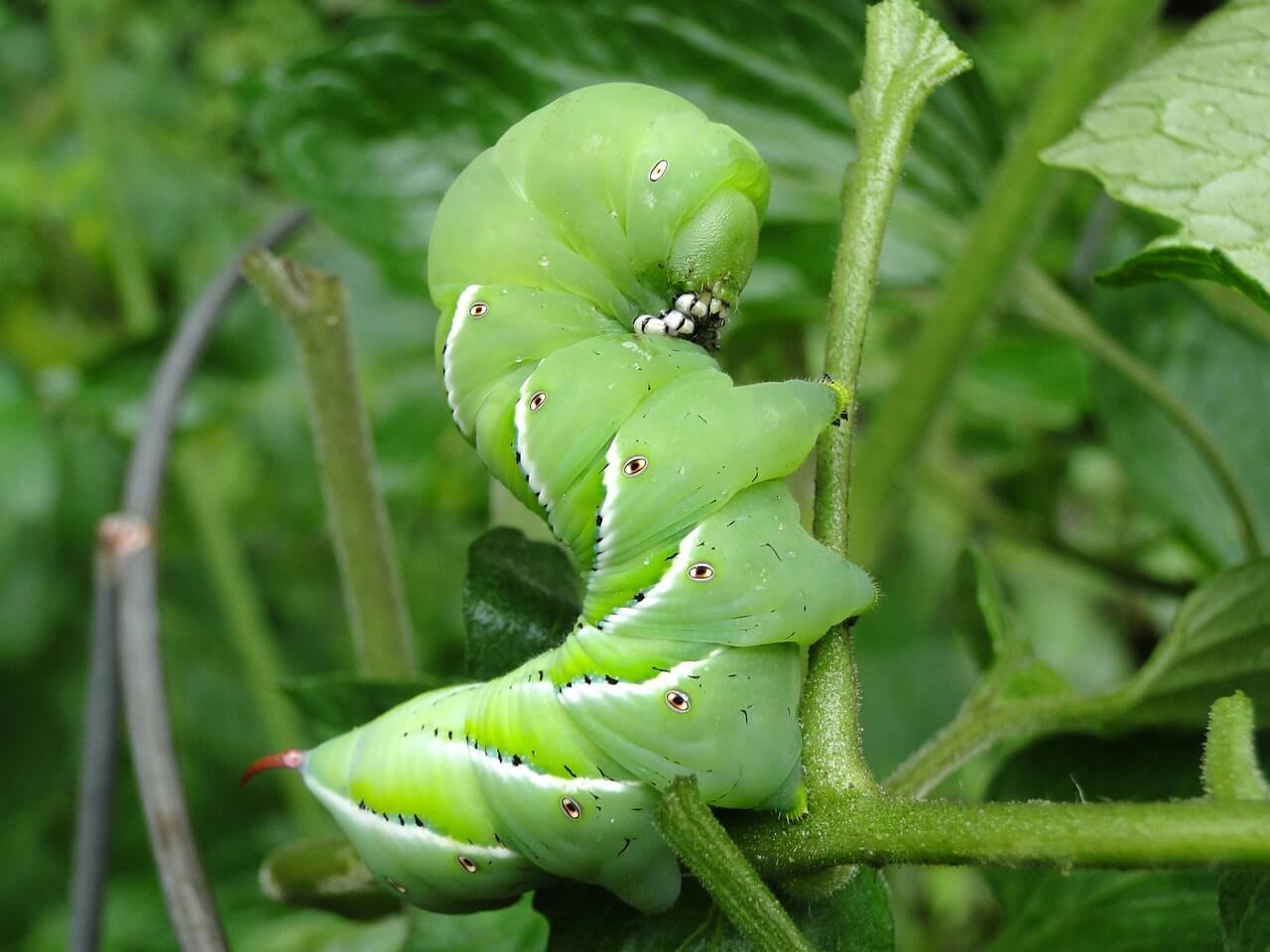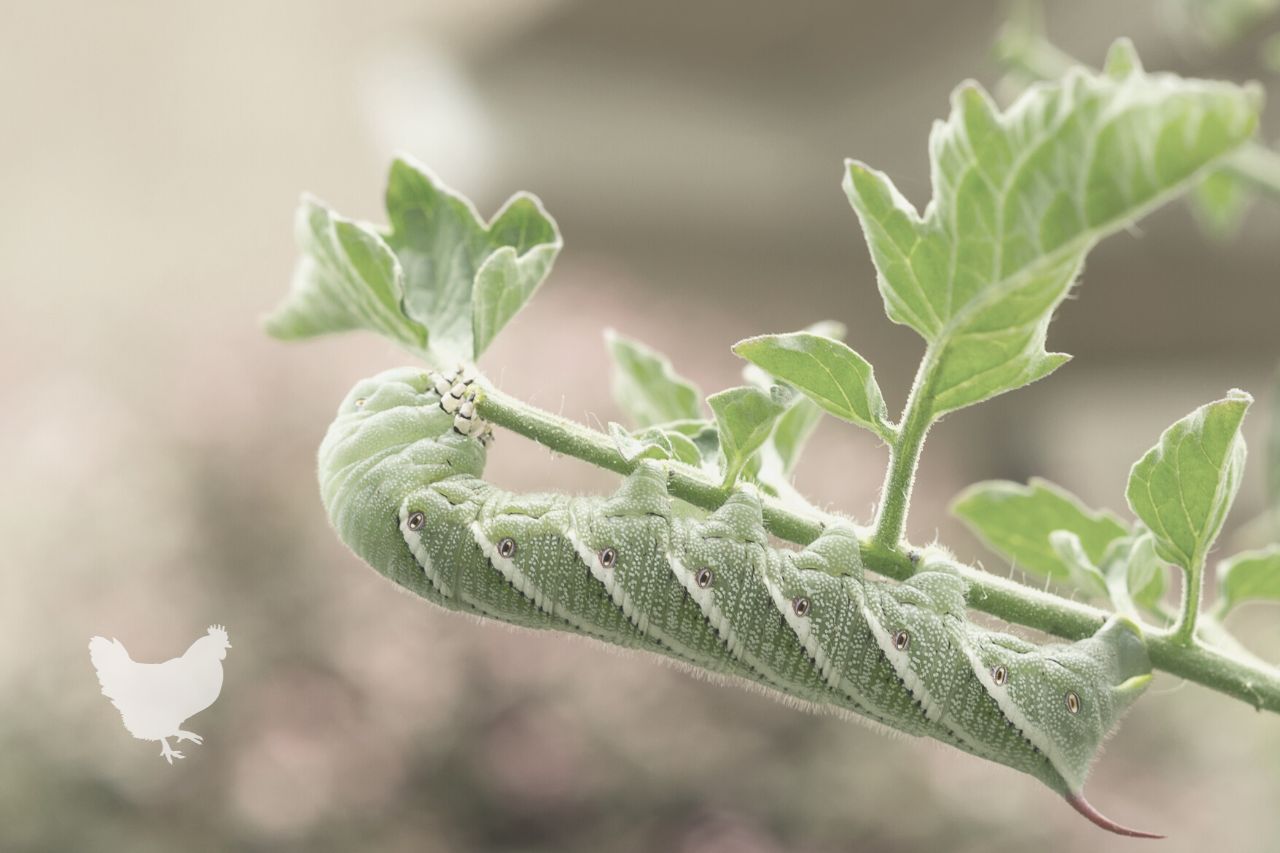Anyone who has ever grown vegetables knows how much time and effort goes into the process. Seeing your plant babies destroyed by garden pests can be devastating – mentally and financially. How do you prevent tomato worms? Read on to find out how to get rid of tomato worms by using methods that are safe for you, your pets, and the rest of your farm.
What You'll Learn Today
- Where Do Tomato Worms Come From?
- Do Tomato Worms Bite?
- How Do You Get Rid of Tomato Worms Naturally?
- How Do You Prevent Tomato Worms?
- Frequently Asked Questions
- Is it easy to tell hornworm caterpillars from other types of caterpillars?
- Are all types of hornworms destructive to garden plants?
- How do full-grown hornworm larvae undergo pupation?
- What kind of moths do hornworms grow into?
- Why are some hornworm moths called hummingbird moths?
- Do all types of hornworm have a rear horn?
- Is there only one kind of hornworm that bothers tomato plants?
- How can you tell tobacco hornworms and tomato hornworms apart?
- When do tomato and tobacco hornworms pupate, and when do adult moths typically emerge?
- How can you control hornworms in your garden?
Where Do Tomato Worms Come From?

Tomato worms, also known as hornworms, are a kind of caterpillar that can terrorize your vegetable garden. They’re most known for eating tomatoes, but they also have an affinity for potatoes, eggplants, and peppers.
The life cycle of a hornworm starts when adult moths lay eggs on the underside of plant leaves late in the spring. These eggs hatch in about a week and then feed for 4-6 weeks until they create a cocoon.
They will spend the winter in their pupal stage in the soil. Then in the spring, moths will emerge and lay eggs, repeating the cycle each year.
Tomato worms are about 3-4 inches long and their white stripes with black spots make them easy to identify.
However, these caterpillars are green and blend in with the leaves, so farmers often don’t notice them until they’ve caused a significant amount of damage.
Do Tomato Worms Bite?
While tomato worms are a major threat to your vegetable garden, luckily they won’t hurt you.
Tomato hornworms have a dark protrusion on their backside that many people mistake for a stinger. But thankfully the caterpillar cannot sting, and won’t bite people.
How Do You Get Rid of Tomato Worms Naturally?

There are a few different ways to get rid of tomato worms and save your delicious veggies. The good news is that pesticides generally aren’t needed to rid your garden of these pests. Here are the four best ways to take back your garden:
1. Hand-picking
Since the caterpillars are so big, the easiest way to manage them is simply by picking them off of your plants. Have a bucket of soapy water handy to drop them into.
2. Introduce bugs that eat plant-eaters
Several insects will eat pests like hornworms that are harmless to humans and plants. You can purchase and introduce bugs like aphids or ladybugs to take care of tomato worms.
If you spot any caterpillars that are covered with white rice-shaped growths, you can leave those alone. The white things are wasp cocoons, which wasps will hatch from and then kill the hornworms.
3. Homemade solution
Spraying A DIY mix of water, dish soap, and cayenne pepper on your plants should take care of any lingering caterpillars. These bugs hate this natural mixture and will not want to go anywhere near your plants.
4. Organic pesticide
Many people swear by Bacillus thuringiensis-based sprays (also known as Thuricide) to get rid of tomato caterpillars. These sprays are made of naturally occurring ingredients and are not harmful to people or pets.
Watch the video below learn how to use safe pesticides on your tomato plants. This video is great because it shows what the caterpillars look like, and the damage they cause to vegetable plants.
How Do You Prevent Tomato Worms?
Since tomato worms can cause a lot of damage before they’re spotted, it’s important to be vigilant to try and deter them before they arrive. You can try things like:
- Till after harvesting. Once you harvest your vegetables, till the soil to destroy any caterpillars that are burrowed underneath. If you spot them while you’re tilling, you can also drop them in a bucket of soapy water to eradicate them.
- Remove weeds regularly. In case you need more motivation to manage your weeds – tomato worms will lay eggs wherever they can. Getting rid of weeds in your garden will reduce the available real estate for tomato worms to lay eggs on.
- Practice proper crop rotation. Planting crops in the same place year after year makes it easy for tomato worms to find them each season. Keep the caterpillars (and other pests) off-guard by rotating your crops every year. Also, make sure you’re not planting other nightshade varieties that the tomato worms like to eat in the same place.
The best methods for preventing tomato worms are tasks that are great for the health of any vegetable garden, regardless of whether you have unwanted pests.
Following those suggestions will not only get rid of plant-eating caterpillars, but will also extend the life of your veggies and maximize your crop yield.
Frequently Asked Questions

Is it easy to tell hornworm caterpillars from other types of caterpillars?
A: Hornworm caterpillars stand out because of their size (up to three inches long) and their distinctive horn and splashy markings. Even so, they can be hard to see on tomato plants because of their bright green, foliage matching color and their tendency to keep to the undersides of leaves.
Are all types of hornworms destructive to garden plants?
A: No, for the most part, the more than 1200 species of hornworms that crawl the globe (with 120 species in North America alone) do very little damage, and we don’t really think about them often. The two types that do the most damage are the Tobacco Hornworm and the Tomato Hornworm.
How do full-grown hornworm larvae undergo pupation?
A: When it’s time for a hornworm caterpillar to undergo transformation into a moth, it will crawl off its host plant and burrow a few inches into loose soil. There it pupates inside a small chamber of packed earth.
What kind of moths do hornworms grow into?
A: The large early evening moths that are commonly known as sphinx, hawk or hummingbird moths are the adults that result from successful pupation of hornworm caterpillars.
Why are some hornworm moths called hummingbird moths?
A: These particular moths do differ from the sphinx and hawk moths because they come out a little earlier in the day. You are more likely to see (and hear) them late in the afternoon. Their behavior is very much like that of hummingbirds because they dart from flower-to-flower drinking nectar. They look quite a bit like hummingbirds, and they make the familiar hummingbird buzzing sound with their wings.
Do all types of hornworm have a rear horn?
A: All do initially, but some types (e.g. the achemon sphinx) lose the tail horn after their first molt. When they outgrow their skin for the first time, they shed the horn along with the skin, and it does not grow back. Instead, it is replaced with a prominent eyespot marking.
Is there only one kind of hornworm that bothers tomato plants?
A: No, there are a couple of different types that hone in on tomato plants. They are the tomato hornworm (Manduca quinquemaculata), and the tobacco hornworm (Manduca sexta). Both types focus on tomato plants, but they will also eat other members of the nightshade family of plants, such as peppers, potatoes and eggplant. Surprisingly, the tobacco hornworm is actually more destructive in the veggie garden than the tomato hornworm.
How can you tell tobacco hornworms and tomato hornworms apart?
A: These two types of hornworms have different markings and different coloration. Tobacco hornworms are marked with diagonal dashes along the sides, and the tail horn of a tobacco hornworm is red. Tomato hornworms are a bit flashier with V-shaped white markings, black sides and a deep green tail horn.
When do tomato and tobacco hornworms pupate, and when do adult moths typically emerge?
A: Tomato and tobacco hornworms overwinter as pupae in the soil. They emerge in late spring and early summer. After mating, the female moths lay large, easily seen eggs on the upper surface of plants’ leaves. In about three days, the young caterpillars hatch and begin feeding. After about a month has passed, they are ready to migrate to the soil and begin pupation.
How can you control hornworms in your garden?
A: Because hornworm eggs are big and easy to see, and hornworms themselves are quite large, careful examination of plants , removal of eggs and handpicking of caterpillars can be very effective in keeping these pests under control. Use of pesticides is discouraged because beneficial pollinator caterpillars and other beneficial insects are very likely to be negatively impacted. In the rare event of a sudden, large infestation, Bacillus thuringiensis (Bt) applied early while the caterpillars are still small can be effective. If caterpillars go unnoticed until they have gotten too big for Bt to be especially effective, insecticides such as carbaryl, permethrin, and Spinosad may be helpful.